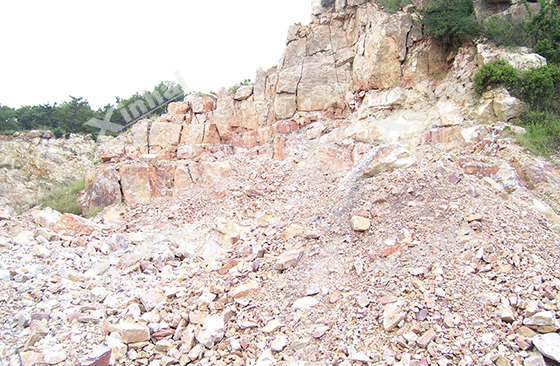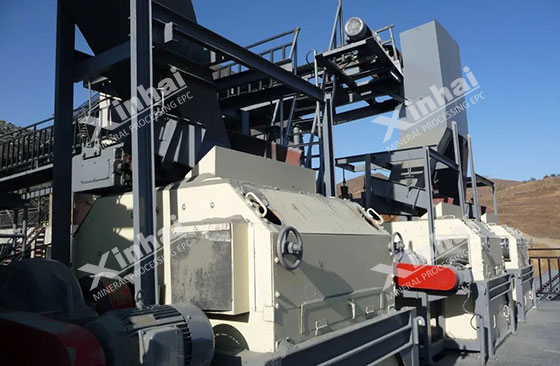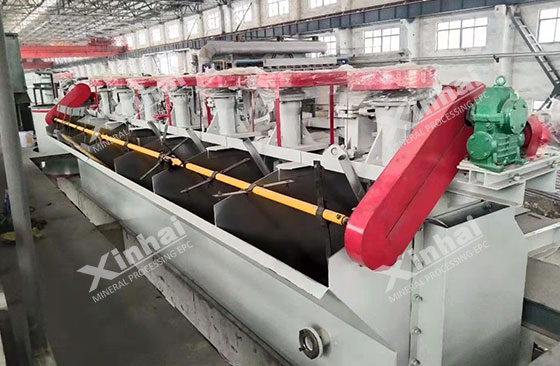As one of the most common minerals in the earth's crust, quartz is widely used in glass, ceramics, metallurgy and other industries. Since quartz ores are usually accompanied by a variety of impurity minerals, an effective beneficiation process must be carried out to obtain high-purity quartz. Quartz beneficiation mainly depends on the differences in physical and chemical properties between quartz and its associated minerals and impurities, including hardness and particle size control, magnetic differences, whether it is soluble in acid solutions, and differences in floatability. Through reasonable beneficiation technology, quartz can be effectively separated from impurities to improve the purity and quality of quartz minerals. The following will focus on these factors to explain how to choose a suitable quartz ore beneficiation process.
Use the table of contents below to navigate through the guide:
01Control of quartz ore hardness and particle size
Quartz has a high hardness, generally around 7, which makes quartz show different crushing characteristics from other minerals during crushing and grinding. Quartz usually shows good dissociation within a smaller particle size range. Therefore, in the mineral processing process, it is very important to control the intensity of crushing and grinding and the particle size distribution. Through appropriate crushing and screening technology, quartz can be effectively separated from the associated minerals.

Process application:
Use jaw crusher or cone crusher for preliminary crushing, and then grind it through equipment such as ball mill.
Use screening equipment to control the particle size of the ore for subsequent mineral processing steps.
02Magnetic differences between quartz ore and other minerals
Quartz itself is non-magnetic, but most of the paragenetic minerals of quartz (such as iron minerals) are magnetic. Using these magnetic differences, quartz can be separated from magnetic minerals such as iron minerals by magnetic separation. In quartz beneficiation, strong magnetic separation equipment is often used to remove impurities such as iron minerals and improve the purity of quartz products.

Process application:
Use strong magnetic separators to remove magnetic impurities such as iron and manganese to ensure that quartz reaches high purity.
In some cases, magnetic separation can be combined with other processes such as flotation to improve the separation effect.
03Whether quartz ore and other minerals are soluble in acid solutions
Quartz has a strong tolerance to acid, but many impurity minerals (such as calcite and iron oxides) can be removed by acid leaching. This chemical beneficiation method takes advantage of the fact that quartz is insoluble in acid while impurity minerals are easily soluble, and improves the purity of quartz by acid washing.
Process application:
Acid washing methods such as sulfuric acid and hydrochloric acid are used to dissolve impurities such as carbonates and iron minerals to improve the whiteness and purity of quartz.
Acid leaching is usually used in the high-purity purification process of quartz and is an important step in the preparation of high-grade quartz products.

04Differences in floatability between quartz ore and other minerals
Quartz and its associated minerals have different floatability, which provides the possibility of flotation separation. Generally, quartz has poor floatability, while many impurity minerals containing iron and aluminum have good floatability. By adjusting the flotation reagent, quartz can be effectively separated from these impurity minerals.
Process application:
Use flotation reagents to selectively capture non-quartz minerals, such as using anionic collectors to flotate and separate minerals such as feldspar and mica.
The flotation process is usually used to remove non-quartz impurities such as silicates and iron minerals in quartz to improve the purity of quartz.

In summary, the quartz ore beneficiation process needs to make full use of the differences in hardness, magnetism, acid solubility and floatability between quartz and associated impurity minerals, and combine crushing, screening, magnetic separation, acid leaching, flotation and other technical means to achieve effective removal of impurities. Each step has an important impact on the purity of quartz, thereby ensuring that high-quality quartz products can be obtained in actual industrial applications. By continuously optimizing the beneficiation process, the market demand for high-purity quartz products can be better met.


 marketing@ytxinhai.com
marketing@ytxinhai.com  0086 13810327080
0086 13810327080 






































































































 CHAT
CHAT MESSAGE
MESSAGE





